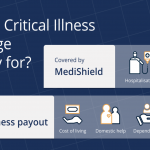Travel insurance is essential when you’re planning a trip, but are you unknowingly making a travel insurance mistake, costing you higher premiums and lower coverage?
Travel insurance plans help by providing coverage for various situations while you’re abroad, including trip cancellations, COVID-19 coverage, and loss or stolen baggage. While these plans are affordable, there are certain factors to consider to ensure you’re not paying more than necessary.
Curious to see if you’re falling into these traps? Read on to discover common travel insurance mistakes that can impact your travel insurance costs and coverage.
Related Story: How Travel Insurance Helps In Flight Delays and Cancellations
Travel Insurance Mistake #1: Having coverage gaps in your travel insurance policy

The terms and conditions of your travel insurance policy are key in helping you avoid coverage gaps that lead to unexpected out-of-pocket expenses. As policy wordings are heavy on jargon, it may seem easier to skip them and just go with the assumption that you’re covered. This false sense of security could cause you financial strain when you least expect it.
For example, coverage gaps can happen during trip cancellations or delays. Travel insurance policies typically outline specific conditions, coverage amount (typically termed as “benefit limit”), or hours for eligible reimbursement. If your situation doesn’t align with the requirements, you may not be eligible for compensation.
What you can do
To avoid coverage gap traps, spend quality time reading and understanding the terms and conditions of the travel insurance policy before signing up. Most travel insurance websites share the policy wordings of their plans, making this an easy task to execute.
Travel Insurance Mistake #2: Not taking pre-existing health conditions into account
While travel insurance plans cover medical requirements while you are travelling overseas, most travel insurance plans do not cover medical requirements due to pre-existing conditions. There are certain travel insurance plans that cater specifically to pre-existing conditions, like the MSIG TravelEasy Pre-Ex.
If you have a pre-existing medical condition and you buy standard travel insurance that doesn’t cover claims related to pre-existing conditions, it can have serious consequences. For instance, if your pre-existing condition flares up during your trip, requiring medical attention at your destination, and your insurance claim is denied, your travel insurance won’t be helpful for the situations you intended to cover. It’s crucial to ensure your travel insurance includes coverage for pre-existing conditions to avoid such pitfalls.
What you can do
Navigate this mistake by opting for insurance providers with pre-existing travel insurance plans. These plans may cost more than a regular plan, but they give you protection tailored to your specific health needs.
By addressing pre-existing conditions openly and honestly, you’re not only complying with the policy requirements but also ensuring that you’re safeguarded for your health and well-being during your journey.
Travel Insurance Mistake #3: Purchasing your travel insurance at the final hour

Do you know the timing of your travel insurance purchase significantly impacts you as well? Waiting till the last minute can have several drawbacks.
Firstly, late purchases limit your coverage options. Some insurance providers may have specific requirements or waiting periods for coverages like pre-existing conditions or trip cancellation benefits.
Another crucial factor is that most Singapore insurance companies do not allow for travel insurance purchases after you’ve left the country. If you forget your travel insurance purchase, you may not have any protection.
Finally, external factors like changes in global events (like the COVID-19 outbreak) can cause insurance coverage to fluctuate. By purchasing your travel insurance ahead of time, you can lock in coverage and ensure that you get the best value out of your travel coverage purchase.
What you can do
Take the time to research, compare policies, and pick your travel insurance well before your travel dates using websites like AMTD PolicyPal.
Compare Travel Insurance Plans
Travel Insurance Mistake #4: Going for the cheapest travel insurance plan
After investing time, resources, and money in carefully planning your well-deserved holiday, the next crucial step is to ensure your travel insurance plan is the perfect match. While opting for the lowest-priced travel insurance plan saves you money, though, it can have significant flaws.
You risk having limited coverage, like low coverage limits for medical expenses and limited or even no coverage for trip interruptions, which can put a damper on your trip. Similarly, you may have lower than necessary coverage for your belongings, which may not be enough to cover the true value of your things if they’re lost or stolen.
What you can do
While cost can be a factor in picking a travel insurance plan, strike a balance between comprehensive coverage and affordability. Review the terms, conditions, and coverage limits to make sure your specific needs are accounted for and you have adequate protection.
Travel Insurance Mistake #5: Skipping travel insurance altogether for short trips

Those weekend getaways to Penang, Malacca, or Batam? You need travel insurance for them too. No matter the duration of your trip, there’s no guarantee that you won’t encounter a travel inconvenience, accident, or even need medical attention.
Medical bills can be hefty and cost way more on foreign lands, so it’s always good to err on the side of caution.
What you can do
If you’re a frequent short-trip traveller, you can consider an annual trip travel insurance plan to ensure you’re covered for a full year.
Related Story: Planning Your Bali Getaway? Check Out These Top Travel Insurance Plans
Travel Insurance Mistake #6: Thinking your credit card travel insurance coverage is sufficient
Some credit cards in Singapore offer travel insurance coverage (if you use that card for your air ticket booking/ hotel booking), miles, lounge access, rebates, and more.
These plans usually have a narrower scope for travel benefits coverage compared to standalone travel insurance policies. Certain cards may also enforce restrictions on age and health. At best, travel insurance coverage from credit cards can serve you for secondary coverage, which kicks in after you’ve exhausted the benefits from your primary travel insurance policy.
What you can do
You should consider standalone travel insurance policies that match your requirements to provide you with comprehensive coverage for your trip.
Travel Insurance Mistake #7: Unnecessary optional riders and add-ons

Add-ons to travel insurance are extra coverages you can include in your policy at an additional cost. These may range from extreme sports coverage to enhanced baggage protection and trip cancellation flexibility. Adding these coverages but not using them contributes to inflated overall premium costs, otherwise better spent during your trip or saved up for a rainy day.
What you can do
Before ticking off an optional rider or add-on for purchase, evaluate if it is necessary based on your travel activities. You can also conduct a cost-benefit analysis to determine the likelihood of needing the coverage versus its added cost. If the probability of you encountering a specific risk is low, investing in its coverage may be a waste of funds.
How do you pick the right travel insurance plan?
It’s easy to get overwhelmed while browsing through different options with varying benefits and prices. Use these four major factors to guide you into picking the best travel insurance for your trip.

Your destination region
In Singapore, travel insurance regions usually come under three segments — ASEAN, Asia (or Asia Pacific), and Worldwide. The wider the regional coverage (the further your travel destination is from Singapore), the higher the premium cost. If you’re only going to a certain region, stick to the closest regional coverage and save your money.
If you’re travelling out of Asia, anticipate that travel insurance premiums can cost 40% to 60% more than ASEAN or Asian coverage.
Travel insurance coverage
It’s crucial to find out and understand the benefits you are entitled to. Insurance companies in Singapore tend to offer up to three tiers of insurance coverage: Basic, Essential (mid-tier), and Elite (premier) plans.
Premium plans cost more than the lower tiers but come with higher benefits. You can compare the choice of your travel insurance using a travel comparison site like AMTD PolicyPal.
Compare Travel Insurance Plans
Your trip duration
Your travel insurance cost is also correlated to your trip duration, with a two-week trip costing more (up to 50% more) than a seven-day trip. If you plan to go for two long trips (over seven days) or four mid-length trips (four to seven days) in a year, annual travel insurance might be more cost-effective.
Short-term or annual plan?
Annual plans cover you for a full 365-day tenure within a stipulated region, and can cost up to S$330 on average. If you need to travel frequently to a region (four to six times, at least) in a year, it’s worthwhile to invest in an annual travel insurance plan.
Related Story: How to Pick the Best Travel Insurance
Enquire more and contact us today!
Want to know more about AMTD PolicyPal Group insurance plans?
Cannot find what you are looking for? Please reach out to us at Contact AMTD PolicyPal
Disclaimer: Protected up to specified limits by SDIC. This is only product information provided. You may wish to seek advice from a qualified adviser before buying the product. If you choose not to seek advice from a qualified adviser, you should consider whether the product is suitable for you. Buying an insurance product that is not suitable for you may impact your ability to finance your future financial needs. If you decide that the policy is not suitable after purchasing the policy, you may terminate the policy in accordance with the free-look provision, if any, and the insurer may recover from you any expense incurred by the insurer in underwriting the policy.
Read More
The Best Travel Insurance in Singapore For COVID-19 Coverage
Travelling with Kids? Here’s What You Need to Prepare
Best Travel Insurance for Sports 2023




